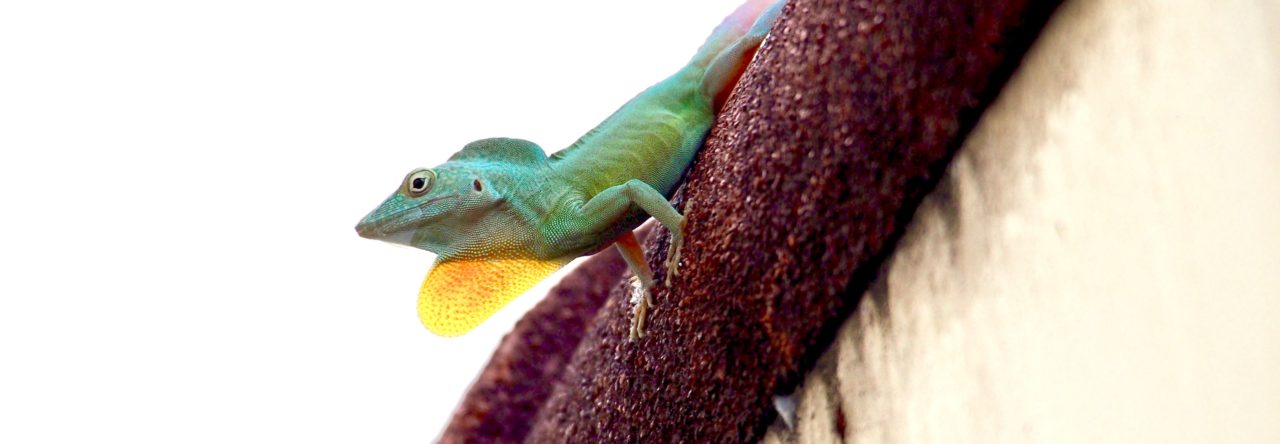Anole Annals has previously had a number of posts on the exciting ongoing project in Puerto Rico examining climate change and thermal biology of anoles. Last night, Luisa Otero presented the results of one aspect of the project, examining the reproductive biology of Anolis cristatellus in a forest and an adjacent (i.e., across the street) open habitat. Previous work by Ray Huey (specifically, his dissertation research in the 1970s) showed that in the open in lowland Puerto Rico, crested anoles are able to thermoregulate and maintain a high and constant body temperature, but in the forest, where good sunspots are scarce, anoles don’t thermoregulate and have lower temperatures.
Luisa’s work confirmed that this pattern has not changed even as Puerto Rico has warmed in recent years–open habitats are still thermally preferable for crested anoles. The exciting new twist is that Luisa examined the reproductive rate of the lizards. Every month of the year, more female anoles are gravid in the open habitat, but this result is particularly striking in the winter, when reproduction slows down in the open, but seems to cease entirely in the forest. Hence, differences in thermal biology do appear to have strong effects on individual fitness and presumably population dynamics, and, at least for now, global warming has not changed the relative suitability of different habitats.
- Evolution in Real Time on Lizard Island - March 23, 2025
- Spider Snags Adult Anolis osa - March 22, 2025
- An Homage to the Green Anoles of New Orleans - March 21, 2025



Leave a Reply